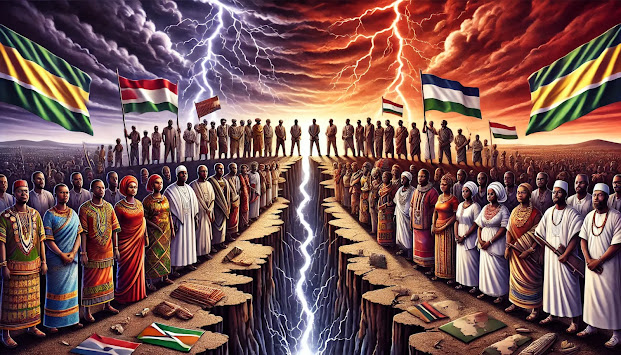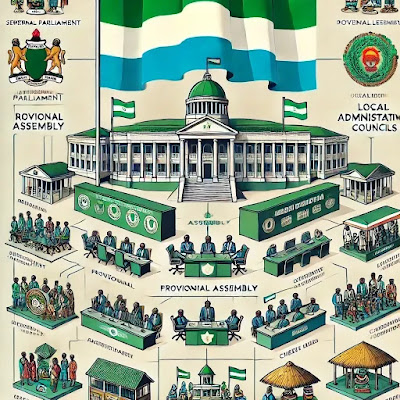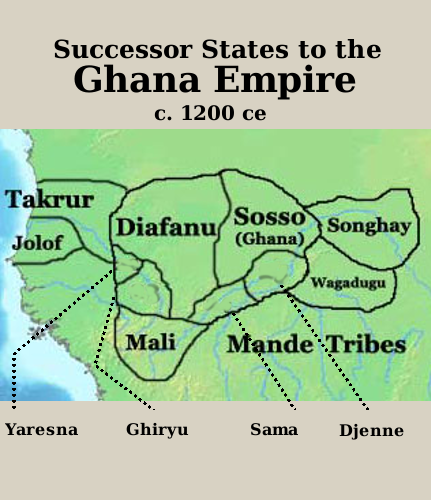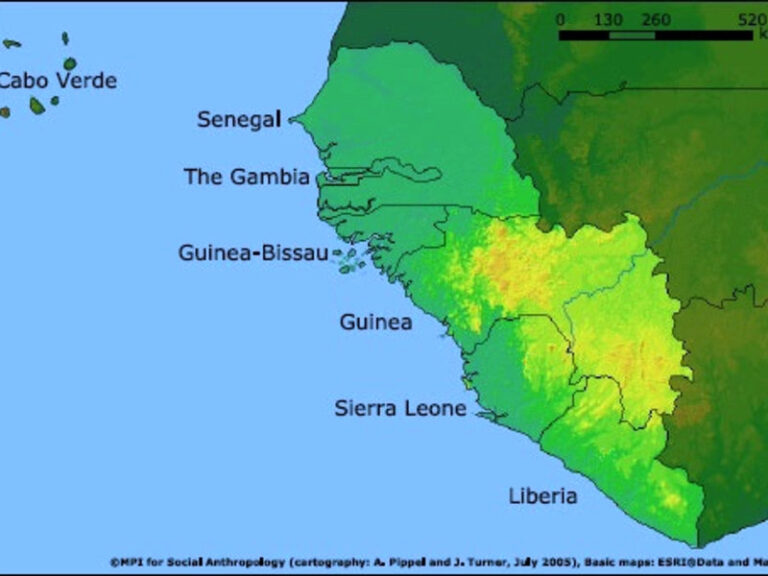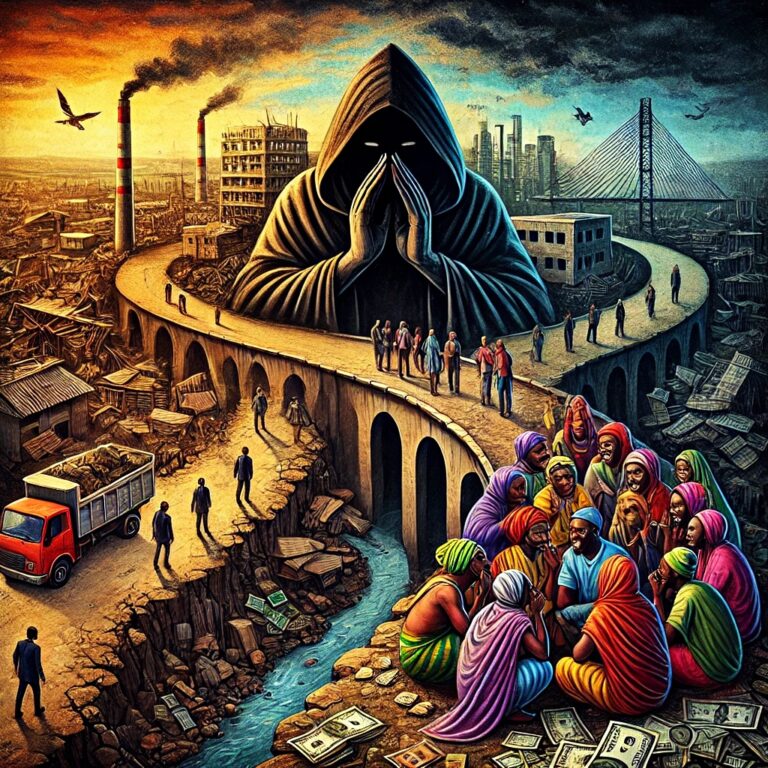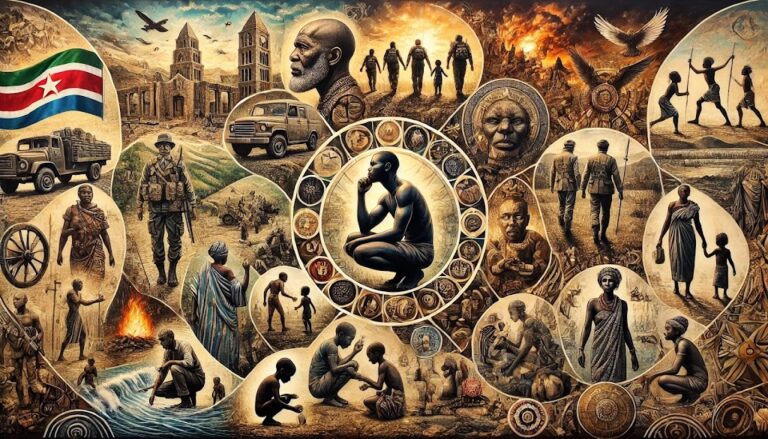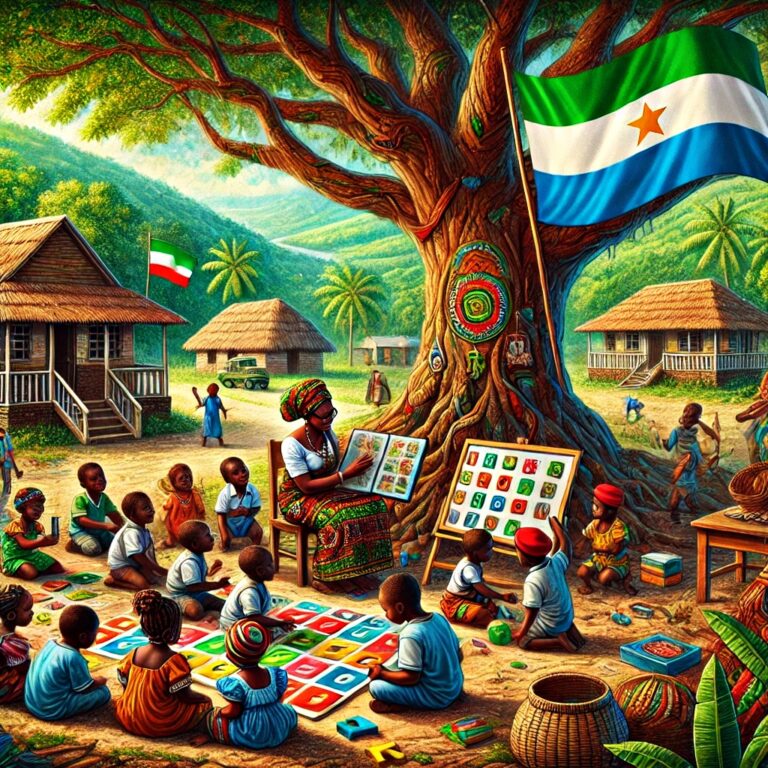Archive
Understanding Poverty in West Africa
February 13, 2025Anthropology,Blog,Google Blogger,Political Economies
West Africa is endowed with vast natural resources and a rich cultural heritage, yet it remains one of the poorest...
The Role of Education in Advancing Development in Sierra Leone: A Focus on Cultural Integration, Mother Tongue Instruction, and Deductive Learning
January 1, 2025Cognative Psychology,Education,Mother Tongue
Education is more than a tool for personal growth; it is a catalyst for national transformation. In Sierra Leone, the...
The Rationale for Chiefs as Arbitrators and Trustees of Resources in Sierra Leone
February 24, 2025Advocacy,African Culture,Anthropology,Attitudinal Change,Beliefs,Blog,Books,Caste system,Cognative Psychology,Culture,economics,Education,Epigenetics,Esoterics,globaltrends,Google Blogger,History,Metaphysics,Mother Tongue,News,Perceptions,Political Economies,Post,Social Justice,Social Psychology,Sociology,Upper Guinea,vlog,West Africa
A Historical, Cultural, Political, and Economic Analysis The role of chiefs as arbitrators and trustees of resources...
The Potential Impact of Emerging Global Political Realities on Resource-Rich but Underdeveloped Countries
March 2, 2025Advocacy,African Culture,Anthropology,Attitudinal Change,Beliefs,Blog,Books,Caste system,Cognative Psychology,Culture,economics,Education,Epigenetics,Esoterics,globaltrends,Google Blogger,History,Metaphysics,Mother Tongue,News,Perceptions,Political Economies,Post,Social Justice,Social Psychology,Sociology,Upper Guinea,vlog,West Africa
By Mohamed Boye Jallo Jamboria 1. Abstract This paper explores the implications of the emerging multipolar global order on resource-rich...
The Politics of Polarization in Sierra Leone: Navigating Division in a Culturally Homogeneous Society
February 17, 2025Anthropology,Blog,Google Blogger,History,Political Economies,Upper Guinea,West Africa
Sierra Leone is a nation that embodies a paradox of cultural unity and political fragmentation. Despite being...
The Historical and Recent Trauma Experienced by Sierra Leoneans: Behavioural Patterns Rooted in Survival Instincts
January 2, 2025Beliefs,Epigenetics,Social Psychology,Sociology
Sierra Leone, a nation rich in culture and natural resources, has endured centuries of trauma that shape its social fabric...
The Anthropology of the Upper Guinea Coast (10th Century to Present)
January 19, 2025Anthropology,Upper Guinea,West Africa
Introduction The Upper Guinea Coast, encompassing modern-day Guinea, Sierra Leone, Liberia, and parts of Senegal and Côte d’Ivoire, has long...
The Class and Respect Issues Among the Africans
January 9, 2025Anthropology,Caste system,Upper Guinea,West Africa
Class and respect dynamics within African societies and the African diaspora represent an intricate interplay of history, culture, and socio-economic...
Show me your History;I’ll show you your greatness!
May 11, 2019Post
The Malinke connection of Sierra Leone The country called Sierra Leone today has a history with a very strong Malinke...
Top News
March 12, 2025
Advocacy,African Culture,Anthropology,Attitudinal Change,Beliefs,Blog,Books,Caste system,Cognative Psychology,Culture,economics,Education,Epigenetics,Esoterics,globaltrends,Google Blogger,History,Metaphysics,Mother Tongue,News,Perceptions,Political Economies,Post,Social Justice,Social Psychology,Sociology,Upper Guinea,vlog,West Africa

Popular News
This Article explores the layered consequences of modernization in African post-colonial contexts, focusing on how political gaslighting...
March 12, 2025
Advocacy,African Culture,Anthropology,Attitudinal Change,Beliefs,Blog,Books,Caste system,Cognative Psychology,Culture,economics,Education,Epigenetics,Esoterics,globaltrends,Google Blogger,History,Metaphysics,Mother Tongue,News,Perceptions,Political Economies,Post,Social Justice,Social Psychology,Sociology,Upper Guinea,vlog,West Africa

Recent Topic
This Article explores the layered consequences of modernization in African post-colonial contexts, focusing on how...

Weekly News
Advocacy,African Culture,Anthropology,Attitudinal Change,Beliefs,Blog,Books,Caste system,Cognative Psychology,Culture,economics,Education,Epigenetics,Esoterics,globaltrends,Google Blogger,History,Metaphysics,Mother Tongue,News,Perceptions,Political Economies,Post,Social Justice,Social Psychology,Sociology,Upper Guinea,vlog,West Africa
ScanAfrik Forbundet
Bygbakanda00
March 12, 2025
Advocacy,African Culture,Anthropology,Attitudinal Change,Beliefs,Blog,Books,Caste system,Cognative Psychology,Culture,economics,Education,Epigenetics,Esoterics,globaltrends,Google Blogger,History,Metaphysics,Mother Tongue,News,Perceptions,Political Economies,Post,Social Justice,Social Psychology,Sociology,Upper Guinea,vlog,West Africa
Advocacy,African Culture,Anthropology,Attitudinal Change,Beliefs,Blog,Books,Caste system,Cognative Psychology,Culture,economics,Education,Epigenetics,Esoterics,globaltrends,Google Blogger,History,Metaphysics,Mother Tongue,News,Perceptions,Political Economies,Post,Social Justice,Social Psychology,Sociology,Upper Guinea,vlog,West Africa
Impunity on the Rise
Bygbakanda00
March 5, 2025
Advocacy,African Culture,Anthropology,Attitudinal Change,Beliefs,Blog,Books,Caste system,Cognative Psychology,Culture,economics,Education,Epigenetics,Esoterics,globaltrends,Google Blogger,History,Metaphysics,Mother Tongue,News,Perceptions,Political Economies,Post,Social Justice,Social Psychology,Sociology,Upper Guinea,vlog,West Africa
Advocacy,African Culture,Anthropology,Attitudinal Change,Beliefs,Blog,Books,Caste system,Cognative Psychology,Culture,economics,Education,Epigenetics,Esoterics,globaltrends,Google Blogger,History,Metaphysics,Mother Tongue,News,Perceptions,Political Economies,Post,Social Justice,Social Psychology,Sociology,Upper Guinea,vlog,West Africa
African Culture
Bygbakanda00
March 5, 2025
Advocacy,African Culture,Anthropology,Attitudinal Change,Beliefs,Blog,Books,Caste system,Cognative Psychology,Culture,economics,Education,Epigenetics,Esoterics,globaltrends,Google Blogger,History,Metaphysics,Mother Tongue,News,Perceptions,Political Economies,Post,Social Justice,Social Psychology,Sociology,Upper Guinea,vlog,West Africa
Advocacy,African Culture,Anthropology,Attitudinal Change,Beliefs,Blog,Books,Caste system,Cognative Psychology,Culture,economics,Education,Epigenetics,Esoterics,globaltrends,Google Blogger,History,Metaphysics,Mother Tongue,News,Perceptions,Political Economies,Post,Social Justice,Social Psychology,Sociology,Upper Guinea,vlog,West Africa
The Potential Impact of Emerging Global Political Realities on Resource-Rich but Underdeveloped Countries
Bygbakanda00
March 2, 2025
Advocacy,African Culture,Anthropology,Attitudinal Change,Beliefs,Blog,Books,Caste system,Cognative Psychology,Culture,economics,Education,Epigenetics,Esoterics,globaltrends,Google Blogger,History,Metaphysics,Mother Tongue,News,Perceptions,Political Economies,Post,Social Justice,Social Psychology,Sociology,Upper Guinea,vlog,West Africa
Advocacy,African Culture,Anthropology,Attitudinal Change,Beliefs,Blog,Books,Caste system,Cognative Psychology,Culture,economics,Education,Epigenetics,Esoterics,globaltrends,Google Blogger,History,Metaphysics,Mother Tongue,News,Perceptions,Political Economies,Post,Social Justice,Social Psychology,Sociology,Upper Guinea,vlog,West Africa
Google Blogger
Bygbakanda00
February 27, 2025
Advocacy,African Culture,Anthropology,Attitudinal Change,Beliefs,Blog,Books,Caste system,Cognative Psychology,Culture,economics,Education,Epigenetics,Esoterics,globaltrends,Google Blogger,History,Metaphysics,Mother Tongue,News,Perceptions,Political Economies,Post,Social Justice,Social Psychology,Sociology,Upper Guinea,vlog,West Africa
Advocacy,African Culture,Anthropology,Attitudinal Change,Beliefs,Blog,Books,Caste system,Cognative Psychology,Culture,economics,Education,Epigenetics,Esoterics,globaltrends,Google Blogger,History,Metaphysics,Mother Tongue,News,Perceptions,Political Economies,Post,Social Justice,Social Psychology,Sociology,Upper Guinea,vlog,West Africa
Archive
Bygbakanda00
February 26, 2025
Advocacy,African Culture,Anthropology,Attitudinal Change,Beliefs,Blog,Books,Caste system,Cognative Psychology,Culture,economics,Education,Epigenetics,Esoterics,globaltrends,Google Blogger,History,Metaphysics,Mother Tongue,News,Perceptions,Political Economies,Post,Social Justice,Social Psychology,Sociology,Upper Guinea,vlog,West Africa
Advocacy,African Culture,Anthropology,Attitudinal Change,Beliefs,Blog,Books,Caste system,Cognative Psychology,Culture,economics,Education,Epigenetics,Esoterics,globaltrends,Google Blogger,History,Metaphysics,Mother Tongue,News,Perceptions,Political Economies,Post,Social Justice,Social Psychology,Sociology,Upper Guinea,vlog,West Africa
The Rationale for Chiefs as Arbitrators and Trustees of Resources in Sierra Leone
Bygbakanda00
February 24, 2025
Advocacy,African Culture,Anthropology,Attitudinal Change,Beliefs,Blog,Books,Caste system,Cognative Psychology,Culture,economics,Education,Epigenetics,Esoterics,globaltrends,Google Blogger,History,Metaphysics,Mother Tongue,News,Perceptions,Political Economies,Post,Social Justice,Social Psychology,Sociology,Upper Guinea,vlog,West Africa
Advocacy,African Culture,Anthropology,Attitudinal Change,Beliefs,Blog,Books,Caste system,Cognative Psychology,Culture,economics,Education,Epigenetics,Esoterics,globaltrends,Google Blogger,History,Metaphysics,Mother Tongue,News,Perceptions,Political Economies,Post,Social Justice,Social Psychology,Sociology,Upper Guinea,vlog,West Africa
RbnLiveTV
Bygbakanda00
February 20, 2025
Advocacy,African Culture,Anthropology,Attitudinal Change,Beliefs,Blog,Books,Caste system,Cognative Psychology,Culture,economics,Education,Epigenetics,Esoterics,globaltrends,Google Blogger,History,Metaphysics,Mother Tongue,News,Perceptions,Political Economies,Post,Social Justice,Social Psychology,Sociology,Upper Guinea,vlog,West Africa
Top News
March 12, 2025
Advocacy,African Culture,Anthropology,Attitudinal Change,Beliefs,Blog,Books,Caste system,Cognative Psychology,Culture,economics,Education,Epigenetics,Esoterics,globaltrends,Google Blogger,History,Metaphysics,Mother Tongue,News,Perceptions,Political Economies,Post,Social Justice,Social Psychology,Sociology,Upper Guinea,vlog,West Africa

